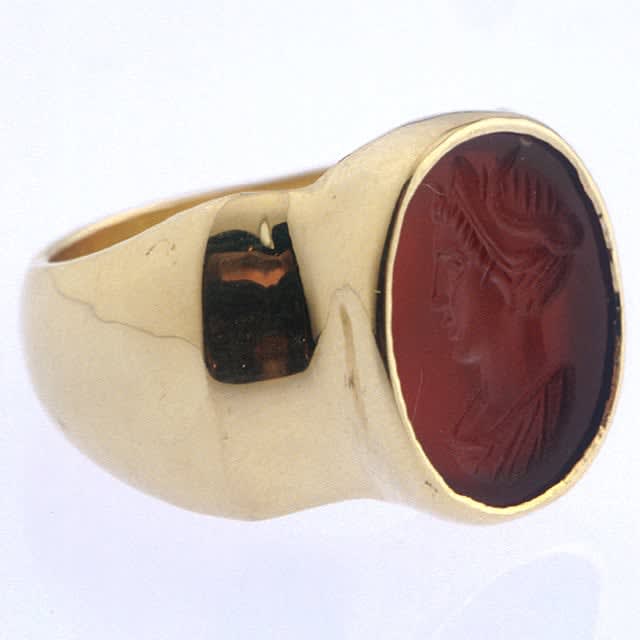Roman Intaglio depicting a Bust of a Woman, 100 CE - 300 CE
Carnelian-Gold
FJ.6479
The art of glyptics, or carving on colored precious stones, is probably one of the oldest known to humanity. Intaglios, gems with an incised design, were made as early as...
The art of glyptics, or carving on colored precious stones, is probably one of the oldest known to humanity. Intaglios, gems with an incised design, were made as early as the fourth and third millennia BC in Mesopotamia and Aegean Islands. They display a virtuosity of execution that suggests an old and stable tradition rooted in the earliest centuries. The tools required for carving gems were simple: a wheel with a belt-drive and a set of drills. Abrasives were necessary since the minerals used were too hard for a metal edge. A special difficulty of engraving intaglios, aside from their miniature size, was that the master had to work with a mirror image in mind. More than likely the attractive woman on this lovely intaglio was an empress. Her regal bearing, elaborate coiffure, and apparent ring of jewels encircling her head suggest she was someone of great importance. She does in fact bear a close resemblance to the empress Julia Domna, wife of the emperor Septimius Severus (reigned 193 - 211 A.D.) Domna was one of the most impressive women to grace the imperial court, possessing a brilliant intellect and energetic character, frequently consulted by her husband on political matters. The engraving is so realistic it brings to life a woman who was not only beautiful, but also of importance in history.
